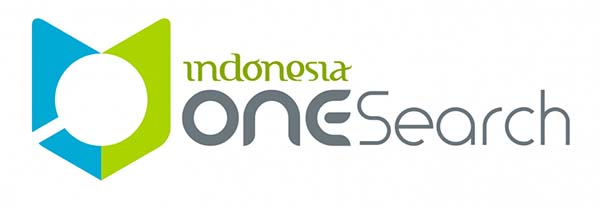PROSES FONOLOGIS PADA PIDATO BERBAHASA INDONESIA OLEH DUTA BESAR KOREA SELATAN – INDONESIA
DOI:
https://doi.org/10.23887/prasi.v17i1.43727Keywords:
Proses Fonologis, Korea, Indonesia, Duta Besar, Phonological Process, AmbassadorAbstract
ABSTRAK
Tujuan penelitian ini adalah untuk mengetahui proses fonologis pada pidato berbahasa Indonesia yang dilakukan oleh duta besar Korea Selatan - Indonesia tahun 2019 dan 2020 yaitu Kim Chang-beom dan Park Tae-sung. Metode penelitian ini adalah deskriptif kualitatif. Adapun data diambil melalui video pidato berbahasa Indonesia oleh duta besar Korea Selatan yang memiliki proses fonologis. Teknik yang digunakan dalam penelitian ini adalah teknik simak dan catat. Langkah-langkah dalam analisis data dalam penelitian ini yaitu meliputi 1) pengumpulan data penelitian, 2) identifikasi proses fonologis, 3) pengkategorian proses fonologis, dan 4) penjelasan proses fonologis. Hasil identifikasi dalam penelitian ini ditemukan proses-proses fonologis berjumlah 49 buah dan terkategori menjadi asimilasi sebanyak 19 buah, disimilasi 3 buah, modifikasi vokal 8 buah, netralisasi 5 buah, zeroisasi 4 buah, anaptiksis 5 buah, epentesis 1 buah, dan paragog 4 buah.
Kata kunci: Proses Fonologis; Korea; Indonesia; Duta Besar
ABSTRACT
The purpose of this study is to determine the phonological process in Indonesian speech that are produced by the ambassadors of South Korea - Indonesia in 2019 and 2020, namely Kim Chang-beom and Park Tae-sung. This research method is descriptive qualitative. The data were taken through Instagram videos regarding Indonesian speeches by the South Korean ambassador which had phonological processes. The technique used in this research are the listening and note-taking technique. The steps in data analysis in this study include 1) collecting research data, 2) identifying phonological processes, 3) categorizing phonological processes, and 4) explaining phonological processes. The results of the identification in this study found 49 phonological processes and categorized into 19 assimilation, 3 dissimilation, 8 vocal modifications, 5 neutralization, 4 zeroization, 5 anapticsis, 1 epenthesis, and 4 paragog.
Keywords : Phonological Process; Korea; Indonesia; Ambassador
References
Asri, N. (2020). Analisis Kesalahan Berbahasa Indonesia Pada Tataran Fonologi Dalam Dakwah Ustaz Abdul Somad Di Youtube, Universitas Muhammadiyah Mataram. Undergraduate.
Azizah, A. (2021). "A Contrastive Analysis Of Korean-Indonesian Phonological Structures." Jokal: Journal Of Korean Applied Linguistics 1 (Ii): 71-79.
Cho, J. And H.-K. Park. (2006). "A Comparative Analysis Of Korean-English Phonological Structures And Processes For Pronunciation Pedagogy In Interpretation Training." Meta: Journal Des Traducteurs/Meta: Translators' Journal 51(2): 229-246.
Diani, I. And A. Azwandi. (2021). "Phonological Change Processes Of English And Indonesian." Joall (Journal Of Applied Linguistics And Literature) 6(1): 133-148.
Erawati, N. K. R. (2012). Asimilasi Fonemis Bahasa Jawa Kuna Salah Satu Tipe Morfofonemik. Udayana University.
Firdhani, A. R., Et Al. (2018). "The Use Of Consonant Elision By Sri Mulyani During Her Interview Session With The Banker." Eltin Journal, Journal Of English Language Teaching In Indonesia 6(2): 53-58.
Gusdian, R. I. (2018). "Transfer Fonologis Konsonan Hambat Dari Bahasa Jawa Ke Bahasa Indonesia." Satwika: Kajian Ilmu Budaya Dan Perubahan Sosial 2(2): 130-137.
Himuna, L. (2015). An Analysis Of Types Of Assimilation In Speaking Class For Fourth Semester Students Of English Teacher Education Department At Uin Sunan Ampel Surabaya. Pendidikan Bahasa Inggris. Surabaya, Universitas Islam Negeri Sunan Ampel Surabaya. Undergradiate.
Indrawati, D. (2015). "Proses Fonologis Dalam Pengadopsian Kata Bahasa Indonesia Ke Dalam Bahasa Cia-Cia Di Kabupaten Buton, Sulawesi Tenggara." Jurnal Pena Indonesia 1(1): 96.
Maharani, D., Et Al. (2021). "Analisis Kesalahan Berbahasa Tataran Fonologi Pada Grup Band Korea Selatan Super Junior." Kode: Jurnal Bahasa 10 (Ii): 160-169.
Mahsun. (2011). Metode Penelitian Bahasa: Tahapan Strategi, Metode, Dan Tekniknya. Jakarta, Rajawali Pers.
Moleong, L. J. (2021). Metodologi Penelitian Kualitatif. P.T. Remaja Rosdakarya.
Muhyidin, M. (2016). "Phonological Interference In The English Pronunciation." Universum: Jurnal Keislaman Dan Kebudayaan 10 (Ii): 209-217.
Muslich, M. (2012). Fonologi Bahasa Indonesia: Tinjauan Deskriptif Sistem Bunyi Bahasa Indonesia, Bumi Aksara.
Nafisah, S. (2017). "Proses Fonologis Dan Pengkaidahannya Dalam Kajian Fonologi Generatif." Deiksis 9(01): 70-78.
Setyati, E., Et Al. (2015). "Phoneme-Viseme Mapping For Indonesian Language Based On Blend Shape Animation." Iaeng International Journal Of Computer Science 42(3).
Sulihingtyas, S. (2013). "Proses Fonologi Bahasa Belanda." Lensa: Kajian Kebahasaan, Kesusastraan, Dan Budaya 3(1): 31-42.
SUMBER VIDEO
[Instagram @koremb.idn]. 3 Oktober 2020. National Day Official Ceremony. Welcome remaks: Amb. Park Tae-sung. Diakses dari: https://www.instagram.com/tv/CF4QTBnpQ-S/
[Instagram @koremb.idn]. 24 Maret 2020. Fighting Againts Covid-19 Challange. Diakses dari: https://www.instagram.com/tv/B-HDDGcnDt1/
[Instagram @koremb.idn]. 1 Januari 2021. Selamat Tahun Baru 2021 Duta Besar Mengucapkan Selamat Tahun Baru 2021 kepada Teman-Teman Indonesia. Diakses dari:https://www.instagram.com/tv/CJfGV0onlyj/
[Instagram @koremb.idn]. 23 Desember 2021. Selamat Hari Natal dan Selamat Tahun Baru 2020. https://www.instagram.com/tv/B6ZnseXn-pC/
Downloads
Published
Issue
Section
License
Copyright (c) 2022 Lia Amelia Nurkhazanah, Lia Maulia Indrayani, Inu Isnaeni Sidiq

This work is licensed under a Creative Commons Attribution-NonCommercial-ShareAlike 4.0 International License.
Authors who publish with Prasi agree to the following terms:- Authors retain copyright and grant the journal the right of first publication with the work simultaneously licensed under a Creative Commons Attribution License (CC BY-SA 4.0) that allows others to share the work with an acknowledgment of the work's authorship and initial publication in this journal
- Authors are able to enter into separate, additional contractual arrangements for the non-exclusive distribution of the journal's published version of the work (e.g., post it to an institutional repository or publish it in a book), with an acknowledgment of its initial publication in this journal.
- Authors are permitted and encouraged to post their work online (e.g., in institutional repositories or on their website) prior to and during the submission process, as it can lead to productive exchanges, as well as earlier and greater citation of published work. (See The Effect of Open Access)


.png)
.png)









